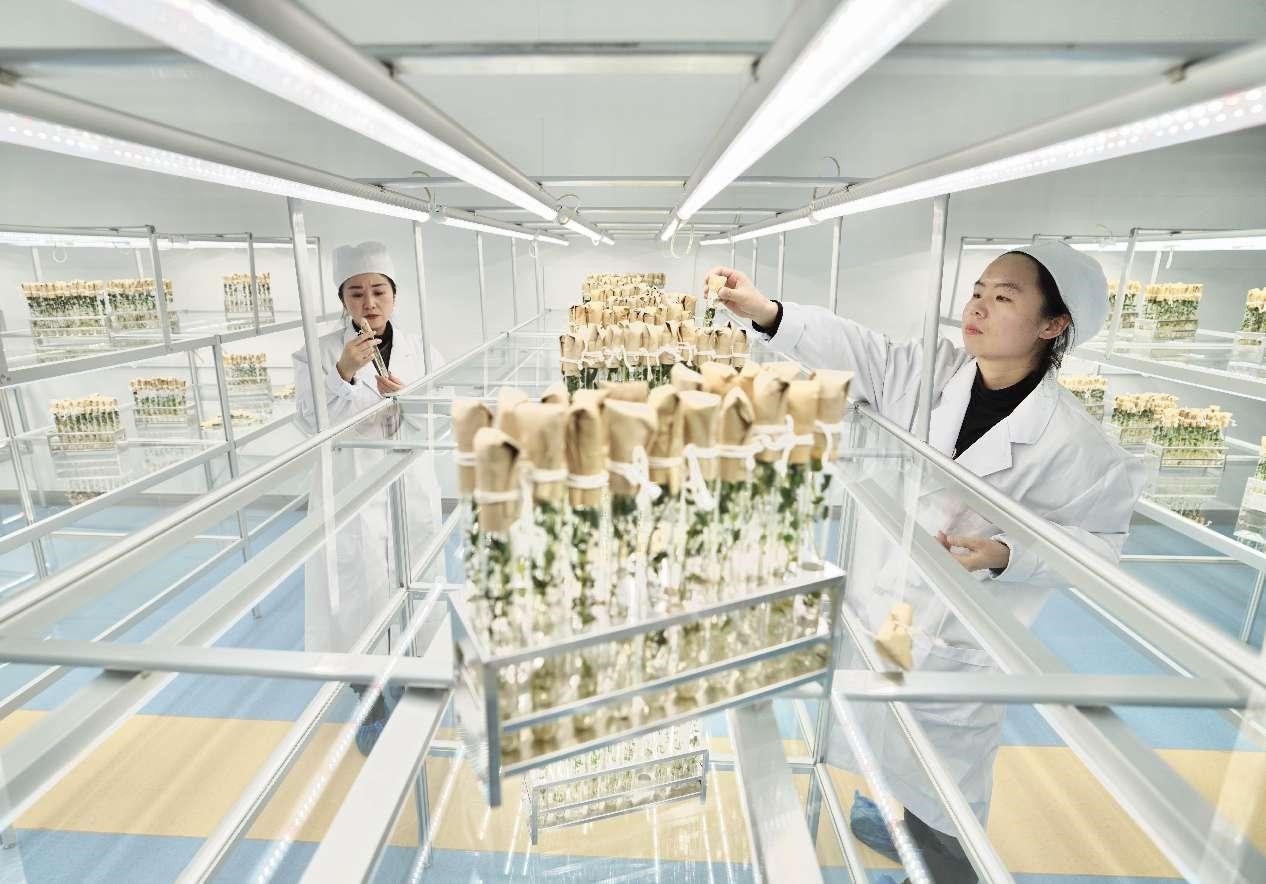Aerospace technologies widely applied in China to improve people's livelihood

Students of a primary school in Xianju county, Taizhou, east China's Zhejiang province operate flight simulators at the science and technology museum of the school. (People's Daily Online/Wang Huabin)
Aerospace technologies serve as a mirror of a country's sci-tech capabilities and overall national strength, while also propelling the development of related high-tech industries.
Today, China's aerospace industry has become a new driver for economic and social development, with the technological achievements being rapidly applied for the public good.
One afternoon, Guo Yufei, a researcher with the Intelligence Technology Academy of China Aerospace Science and Industry Corporation (CASIC), was testing a camera developed by his team.
"Traditional cameras are limited by exposure synchronization technology, often resulting in unclear imaging when capturing scenes with varying levels of brightness," Guo said.
As he pointed the camera towards the sun outside the window, a display next to him immediately showed a clear and sharp image.
Equipped with a neuromorphic sensor, the camera could capture images with "asynchronous" exposure just like human eyes to precisely render scenes with significant variations in brightness.
Guo told People's Daily that this technology was initially employed in space observation and other aerospace fields, but it is now finding applications in everyday scenarios such as smartphone photography and smart driving.

Researchers observe space-exposed potato seeds at a potato technology innovation center in Shangdu county, north China's Inner Mongolia autonomous region. (People's Daily Online/Jia Peng)
In recent years, over 4,000 items of achievements obtained through China's space program have been used in such industries as biology, medicine, agriculture, and natural resources in Beijing, bringing aerospace technologies closer to the daily lives of the people.
A vehicle-road-cloud collaborative automated driving system, developed by the Intelligence Technology Academy of CASIC through long-term research, is now operational in the Wuhu Comprehensive Bonded Zone, east China's Anhui province. It connects all the self-driving shuttle buses that run along the 7.2-km-long loop road, providing commuting services for more than 100 employees of the bonded zone.
"It used to take about 25 minutes to walk from the subway station to the office building, but with the unmanned shuttle buses, the commuting time is reduced to just eight minutes," said Jiang Fan, a researcher with the Intelligence Technology Academy of CASIC.
"Apart from high precision, the smart driving system is also safe, efficient, and operates around the clock," Jiang added.
In Gangwan village, Huangpi district of Wuhan, central China's Hubei province, driverless rotary tillers were working in the paddy fields of Yongwang agricultural cooperative, neatly turning over the soil ridges.
Tao Zhe, an operator of intelligent farm machinery, was controlling these driverless rotary tillers using a phone app enabled by the BeiDou Navigation Satellite System (BDS). According to Tao, these tillers were all equipped with the BDS, ensuring precise operation along the routes.
The BDS technology has made work easier for Yongwang agricultural cooperative, from planting to management, and to harvesting.

A drone inspects a power transformer at a 500-KV substation in Bozhou, east China's Anhui province. (People's Daily Online/Lou Yanxu)
"We have installed sensors in different parts of the paddy fields and use 5G, BDS, Internet of Things, and cloud computing to monitor real-time data on pH, temperature, wind speed, and other factors for each plot," said Hu Dan, head of the cooperative.
Compared to traditional production methods, the digital agricultural production model enabled by technologies such as the BDS can save more than 90 percent of manual labor in farm management, Hu explained.
In recent years, Hubei province has been accelerating the adoption of the BDS technology in the agricultural sector. As of now, more than 40,000 sets of BDS-enabled agricultural machinery terminals have been installed in the province, covering a total operating area of 112 million mu (approximately 7.47 million hectares).
Apart from agriculture, Hubei province has extensively applied the BDS technology in electricity, water conservancy, and transportation sectors.
In Fujiayan township, Wufeng Tujia autonomous county, Yichang, Hubei province, Xu Haizhang, a team leader with the Ultra High Voltage Company of State Grid Hubei Electric Power Co., Ltd., was skillfully maneuvering a drone with a remote control to fly it steadily along the power lines.
"Most of the power lines under our management are located in mountainous areas, where network signals were often unavailable. In the past, even though we had patrol drones, they often couldn't take off," Xu said.
"Now, with the BDS-enabled drones, we enjoy centimeter-level real-time precision positioning services and have achieved accurate perception in all weather conditions and without blind spots," he added.
Photos
Related Stories
- China completes construction of gigantic space weather monitoring radio telescope
- China Focus: China delivers Chang'e-6 mission cube satellite data to Pakistan
- Researchers classify atmospheric escape mechanism of low-mass exoplanets
- China's space weather center predicts strong solar flares
- China's Long March-6C rocket makes maiden flight
Copyright © 2024 People's Daily Online. All Rights Reserved.









